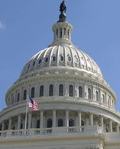
ASTMH continues to advocate before Congress and the Biden administration. Letters that ASTMH led or joined include:
- A letter to CDC Director Walensky supporting the CDC’s parasitic laboratory services and emphasizing the need to resume lab services as soon as possible.
- Letters to Congress advocating for global health research and development funding at NIH, CDC, BARDA, USAID and Department of Defense for FY 2023.
- A letter with over 70 organizations to Congress advocating for $11 billion in funding for CDC for fiscal year (FY) 2023.
- A support letter for the Tracking Pathogens Act regarding genomic sequencing and surveillance of pathogens.
Read More:
Funding for Global COVID-19 Efforts Left Out of Latest Version of Aid Bill
Biden Administration Releases FY23 President’s Budget Request
Funding for Global COVID-19 Efforts Left Out of Latest Version of Aid Bill
As Congress attempted to leave town for a two-week recess, negotiations continued on supplemental funding for COVID-19 needs. A $10 billion funding package was developed that omitted any funding for global COVID-19 efforts, an amount that was far less than the original $22.5 billion requested by the White House. The final agreement includes $5 billion to purchase therapeutics and antivirals, another $4.75 billion that could be used for a wider range of purchases, such as tests and vaccines, and $750 million for research projects for future COVID-19 vaccines and therapeutics. Congress eventually left Washington, DC without passing the agreement when it was delayed by threatened amendments on immigration. Congress will likely resume debating the package upon their return to Washington but is unlikely to add designated global funding, and advocates will be forced to advocate for those funds in a different legislative vehicle.
Biden Administration Releases FY23 President’s Budget Request
On March 28, the Biden administration released its
budget request for fiscal year 2023. The President’s budget request, no matter the party or year, has no legal force and instead is an outline of the administration’s priorities. Congress ultimately decides funding for government programs. This annual event is the kickoff of the FY23 process.
The budget is a mixed bag for global health advocates. The President proposed $88.2 billion in mandatory spending for pandemic preparedness activities, including R&D over the next five years. The proposal would include funding for CDC, NIH and USAID. However, securing this type of mandatory funding cannot be done with Congressional action and it is highly unlikely that Congress will agree to this. This means the proposal faces nearly impossible odds on Capitol Hill.
Outside of this mandatory funding the budget was mediocre for global health and R&D agencies. For policy wonks, most of the request was drafted before FY22 spending levels were finalized on March 9, so some proposed funding levels for FY23 actually look like cuts relative to where FY22 landed. The budget’s few upticks include a big increase to the U.S. contribution to the Global Fund for AIDS, Tuberculosis, and Malaria and increased funding for new and existing global health security program; otherwise, increases proposed are mostly modest, flat funding and cuts, in some cases, relative to FY22 enacted funding for the remainder of global health lines.
The good news is that NIH received a $4.3 billion increase (a 9.08 percent increase over FY22 funding), but $4 billion of that is for the new Advanced Research Projects Agency for Health (ARPA-H), leaving just under $300 million in increases for all other institutes and centers. One of the few institutes to receive a proposed boost relative to FY22 was the Fogarty International Center, proposed to increase $9.1 million (11 percent) over FY22 enacted. Despite the experience of the last two years with the pandemic, NIAID saw a 0.87 percent cut to recommended funding compared to FY 22 funding.
The CDC received a 14.77 percent increase and a $101 million increase for the Center for Global Health, of which $100 million would go to the Global Public Health Protection account (40 percent increase) and $4 million to the Division of Parasitic Diseases and Malaria (+15 percent) offset by small cuts to several other CGH divisions relative to FY22 enacted levels. The request includes an increase of $10 million (+1.4 percent) to the National Center for Emerging and Zoonotic Infectious Diseases.